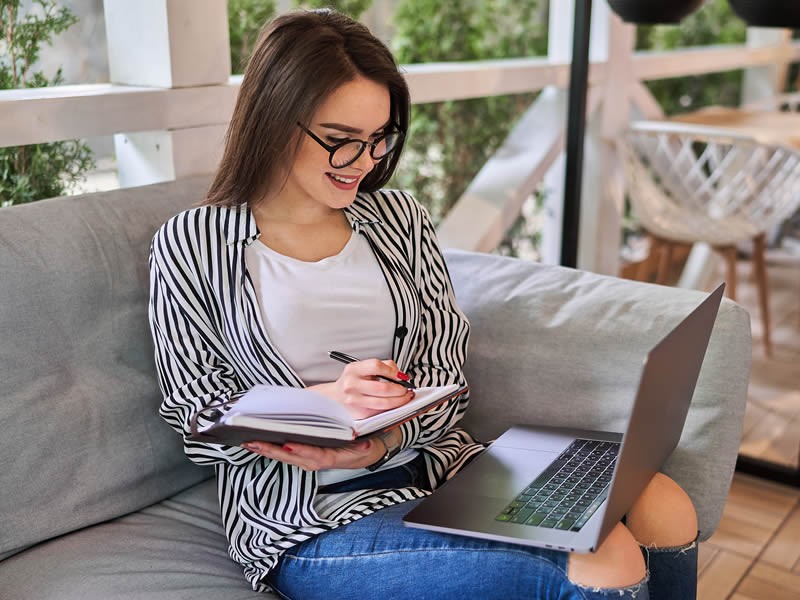Insight Blog
Agility’s perspectives on transforming the employee's experience throughout remote transformation using connected enterprise tools.
8 minutes reading time
(1692 words)
Crossboarding – UPDATED 2022 – Process & Best Practices
When hiring and salary budgets are already limited, organizations may choose to consider cross-boarding as an alternative to employing a new employee to fill a position.
We in HR are all familiar with the term "onboarding," which refers to the process new employees go through in order to become fully integrated into their company. This includes everything from employment acceptance to team introductions and the instruction necessary to begin executing a new function. Immersing someone new into the workplace is a crucial aspect of integrating them into the company's culture and ideals. According to a report by Gallup, only 12% of employees believe their company has a great onboarding strategy so clearly, this needs improvement, let's focus on crossboarding for now and how intranet software can facilitate the experience to utilize your existing employee's skillset.
The investment of time and money in onboarding, however, is worth it in the long run. Each new hire must go through an exorbitantly expensive onboarding procedure. Furthermore, it's an expensive gamble. Screening and interviewing processes can't completely exclude the possibility that a new hire would not work out.
When hiring and salary budgets are already limited, organizations may choose to consider cross-boarding as an alternative to employing a new employee to fill a position.
What is crossboarding?
Employers use crossboarding to identify potential candidates for open positions, train them on the job requirements, and then place them in the new position. Instead of looking for new staff, you can use the organization's already-existing resources to get the job done.
What are the benefits of Cross Boarding?
- Reduced risk: You are already moving a hired employee from one position to another
The cross-boarding route reduces risk, but it does not completely remove it. Employees who have been cross-boarded into a new position may find that they are less competent in their new position than they were in their previous one. When compared to recruiting a new employee, cross-boarding is still much less dangerous than employing an outside candidate, who a company may not be able to properly assess for several months.
- Cost-effective: It helps you to save money as you will not need to go through the hiring process
It is possible to save money via cross-boarding. An existing employee can be trained for a fraction of the expense of hiring a new one. Cross-boarded employees don't need to learn about the company's values or culture; they already know these things. This speeds up the time it takes to get up and to run.
- Employee engagement: Crossboarding can help to increase employee engagement
A more diversified job description may be more appealing to some individuals, who may be content with the same duties every day. Companies that are looking to fill a vacuum in the workforce can offer a new position to employees who have become disenchanted in their current position. You can make the employee feel appreciated by providing the opportunity to develop new skills as it will help to increase employee engagement.
- Improved employee retention: Crossboarding provide new opportunities to employees
Retention is boosted because employees may regard an internal transfer of an employee as an opportunity to progress into new responsibilities in the future. Your employees may be less likely to leave the company if they are looking for a new opportunity, which could have a positive impact on your retention rates.
Important crossboarding SuccessFactors
Crossboarding, like onboarding, has a few considerations that cannot be ignored. For example, provide the employee immediate access to all company software and project management tools. They also need to be familiar with the new skills and have a detailed description of their new function.
When a new role requires training on new software, be sure to allow the newly promoted employee plenty of time to get up to speed.
The best option is a user onboarding tool that guides the employee and delivers all the required information at the appropriate time. Ensure that the person has the necessary technical and non-technical abilities to succeed in their current role.
One alternative is online education. A more experienced coworker can be assigned to train him or her. There's a career coach who believes that your coworkers are the best source of information about crossboarding.
In addition to the technical and practical aspects, the employee must also be able to blend in with the rest of the group. Worker productivity improves faster when they feel accepted into a new team and have good relationships with all their coworkers. In their performance, you can clearly perceive this.
Equal benefits for employees and employer
Among crossboarding's advantages is the fact that it helps the company discover the actual potential in their workforce. Crossboarding is primarily a way to save money that would otherwise be spent on employing a new employee.
Small and medium-sized businesses with limited resources benefit most from efficient training for new employees.
Employees who have been promoted or cross-boarded don't need to learn about the company's culture, values, or goals. All of this is second nature to a long-term employee. As a result, you save money as well as time.
According to the employee, he or she will also benefit from the new circumstance for a variety of reasons. When an employee is promoted, it is a sign that their boss has confidence in them. A promotion to a higher position indicates advancement in one's profession, as well as the possibility for additional education.
What is the cross boarding process?
The term "transitioning" or "cross-boarding" refers to the act of transferring an existing employee to a new role inside your company. Your organization and the employee will benefit from a smooth transition because it will strengthen their working connection. Your Cross-Boarding process needs to be defined in order to perform this
Communication is the key
In order to succeed, you must first and foremost communicate effectively. The employee and departments involved should be informed of any upcoming changes and what to expect going forward. However, if no new staff is needed, one department will lose an employee while the other receives a new one. There needs to be a thorough investigation into how this will affect each of the departments.
Information about new position
While the employee is already familiar with your company's culture, they are unfamiliar with the ins and outs of their new position and can benefit greatly from a Cross-boarding process. Furthermore, if they are moving from one department to another, they may not have met their new coworkers yet.
The need for infrastructure changes
The employee will need access to multiple accounts as part of the Cross-boarding process, so some adjustments to the existing infrastructure will be necessary. For a new employee's success, it is critical that your HR department make appropriate adjustments to the personnel record and that your IT department allows the correct access.
Training
The employee is already familiar with your company but is starting a new job, and they'll need some help getting settled in. As previously stated, the employee must learn everything necessary to perform their new duties effectively. Access to the system, team meetings, pay raises, changes to positions in the human resources database, and so on are also included.
Use of intranet
It is possible to create templates with an intranet that explain all of the duties that must be completed when an employee moves from one position to another within your company. Using these templates, you can assign them to the target team members, the employee, and the HR administrator responsible for pushing the changes in the system, respectively.
What are the cross boarding best practices?
Your talent management approach should include a focus on employee transitions. You want to provide a valuable and enjoyable crossboarding experience for these employees to ensure long-term engagement and retention, whether forced or voluntary.
If you have new employees coming into your company, you need to make sure they have access to the systems they'll need to do their job effectively. This includes things like payroll and reporting arrangements, as well as office furniture and equipment.
Even when moving to a different team, office, or division, managers and teams still need to be introduced, socialized, and integrated.
- Personalize the procedure: Employers should personalize the transition process as much as they can
A person doesn't want to feel like a cow being led through a slaughterhouse. By automating compliance and administrative activities (which include some communications), you can help transitioning staff get used to their new jobs much like new hires would.
The introductions and meetings with team members and key contacts should also be scheduled in advance.
Scheduling conversations about performance and setting goals early is also critical, as is tailoring all communications and information to the specific requirements of the individual.
- Training: Provide training sessions that are centered on productivity
You want your employee back to full productivity as soon as possible because change can be disruptive and demoralizing. Make it easy for employees to learn about their new roles and responsibilities, as well as how their own talents and experiences connect with those of the company as a whole. Encourage them to take responsibility for their actions.
- Improve internal communication: Make a connection through relevant, personalized communication
Even if your employees have been with the company for a long time, they still need to be cultivated and courted. Communication that is process-driven, full of jargon, and emotionless needs to be replaced.
Make use of instant messaging systems to foster open and casual contact and ensure that the employee feels valued by establishing nurturing communications throughout the full crossboarding process and training supervisors to do so.
Categories
Blog
(2616)
Business Management
(320)
Employee Engagement
(210)
Digital Transformation
(174)
Growth
(119)
Intranets
(119)
Remote Work
(61)
Sales
(48)
Collaboration
(37)
Culture
(29)
Project management
(29)
Customer Experience
(26)
Knowledge Management
(21)
Leadership
(20)
Comparisons
(6)
News
(0)
Ready to learn more? 👍
One platform to optimize, manage and track all of your teams. Your new digital workplace is a click away. 🚀
Free for 14 days, no credit card required.

















